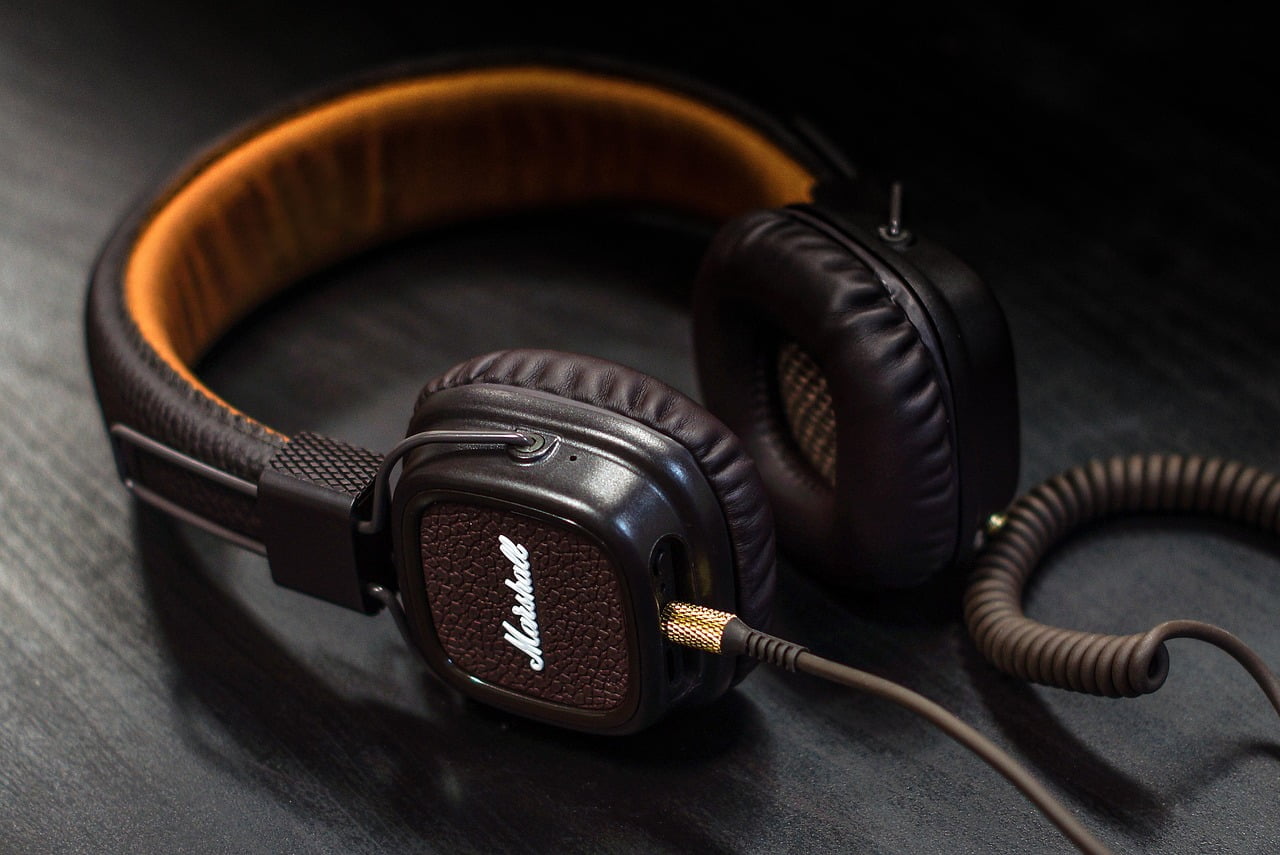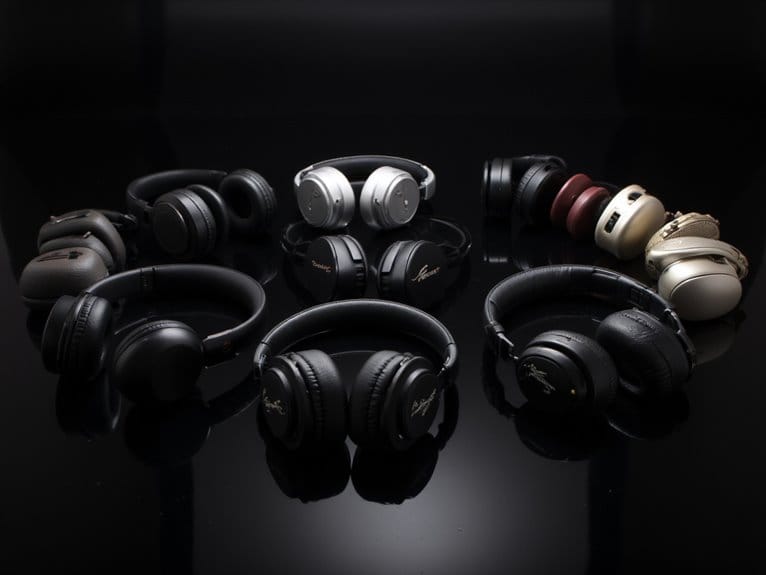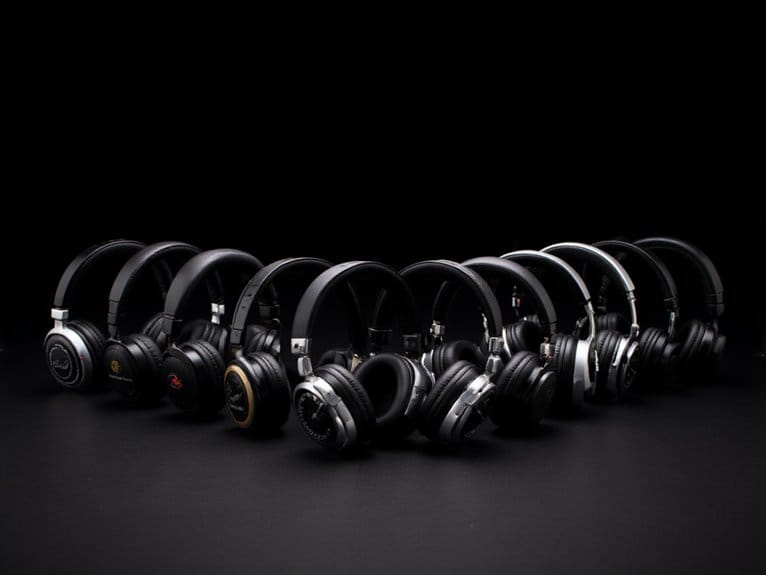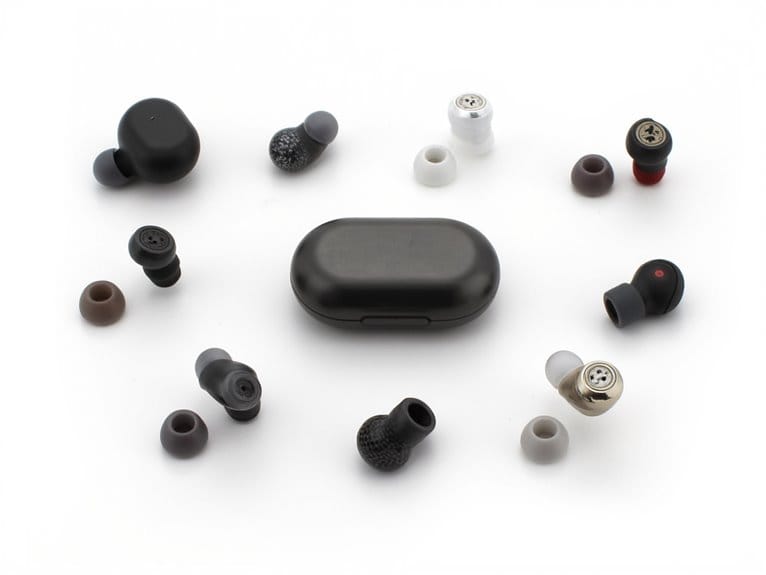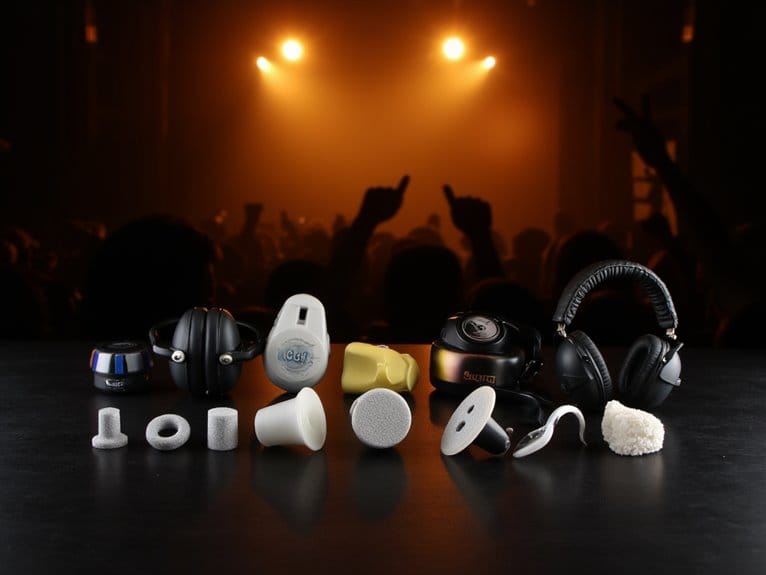Balancing Bass Response: Tips for Selecting Headphones for Bass-Heavy Music
When selecting headphones for bass-heavy music, it’s crucial to focus on achieving a balanced bass response to enhance the audio quality. Choose over-ear headphones with closed-back designs for impactful bass reproduction. Look for driver sizes of 40mm or larger to deliver pronounced bass response, and prioritize headphones with a wide frequency response range, specifically handling frequencies as low as 20Hz for accurate bass reproduction. Consider impedance levels above 80 ohms for the best bass performance, along with personal sound quality testing to evaluate subjective listening experience. Aim for a sound signature that emphasizes bass frequencies in the range of 20Hz to 250Hz and drivers that offer tight and controlled bass for a rich low-end experience. The right headphone choice can greatly impact your overall listening enjoyment and satisfaction with bass-heavy music.
We are supported by our audience. When you purchase through links on our site, we may earn an affiliate commission, at no extra cost for you. Learn more.
Headphone Type Considerations
When choosing headphones for bass-heavy music, the type of headphone plays a pivotal role in determining the quality and depth of the bass response. Over-ear headphones are favored for their impactful bass due to their larger drivers that can move more air, resulting in richer low frequencies. Closed-back headphones excel in bass reproduction by isolating the sound within the ear cups, preventing sound leakage and enhancing bass depth and impact.
Low impedance headphones are essential for bass-heavy music as they require less power to deliver high volumes, ensuring efficient power delivery and better bass performance. Choosing headphones with emphasized low frequencies or those specifically designed to boost bass can greatly enhance the overall bass experience, making them ideal for bass enthusiasts.
Furthermore, headphones with an extended frequency range are vital for capturing the full spectrum of bass frequencies, including deep sub-bass and detailed bass notes accurately. This extended range allows for a more immersive bass experience, bringing out the subtle nuances in bass-heavy tracks that might otherwise be missed with limited frequency response headphones.
Importance of Driver Size
When it comes to headphones optimized for bass-heavy music, the driver size plays a vital role in shaping the overall sound profile. Larger drivers are known to deliver more pronounced bass response due to their ability to move more air. Understanding the relationship between driver size and bass detail clarity is essential for selecting headphones that offer a rich and immersive listening experience.
Driver Size Impact
The impact of driver size on headphone performance, particularly in relation to bass reproduction, is a critical factor to contemplate when selecting headphones for bass-heavy music. Larger drivers tend to excel in delivering a more robust bass response and enhanced overall sound quality. Here are key points to consider regarding driver size:
- 40mm drivers: Commonly found in headphones, offering a balanced mix of bass impact and clarity.
- 50mm or above drivers: Capable of producing deeper and more powerful bass, ideal for bass-heavy music genres.
- Reproduction of low frequencies: The size of the driver directly affects the headphones’ ability to accurately reproduce low frequencies with impact.
- Choosing the right headphone model: Understanding driver size is paramount for selecting headphones that can meet the demanding bass requirements of specific music genres.
Bass Detail Clarity
Choosing headphones with bigger driver sizes greatly improves bass detail clarity, crucial for fully appreciating the complete richness of audio in bass-heavy music genres. Larger driver sizes allow for more accurate reproduction of low frequencies, enhancing bass impact and detail in the sound. The increased surface area of the drivers enables them to move more air, resulting in a more pronounced bass response. When it comes to headphones selection, considering the driver size is essential for balancing bass response and ensuring that nuanced bass details are not lost in the audio playback. Opting for headphones with larger driver sizes can greatly enhance the overall listening experience, especially for individuals who prioritize bass clarity and depth in their music enjoyment.
Frequency Response Range
To accurately reproduce bass-heavy music, headphones must possess a wide frequency response range, ideally spanning from 20Hz to 20,000Hz. When selecting headphones for bass-heavy music, the frequency response range plays an important role in achieving the desired sound quality. Here are key points to keep in mind:
- Strong Bass Performance: Headphones need to handle frequencies as low as 20Hz to deliver deep and impactful bass that resonates with the listener.
- Flat Frequency Response: Opt for headphones that provide a flat or balanced frequency response across the entire range. This guarantees that all frequencies, especially the low-end bass frequencies, are reproduced accurately without any distortion or bias.
- Clarity and Accuracy: A wider frequency response range contributes to maintaining clarity and accuracy in bass reproduction. This leads to a more authentic and balanced sound, enhancing the overall listening experience.
- Richness and Depth: Headphones with a limited frequency response may compromise the richness and depth of bass-heavy tracks. Choosing headphones with an extended frequency range can help capture the full spectrum of bass frequencies, providing a more immersive sound quality.
Selecting headphones with the appropriate frequency response range is vital for enjoying bass-heavy music to its fullest potential.
Impedance for Bass Clarity
With higher impedance levels, headphones can greatly enhance bass clarity and control, particularly in the realm of low-frequency reproduction. Impedance plays a vital role in determining how effectively headphones can reproduce low-frequency sounds, essential for bass-heavy music. Headphones with impedance falling between 16-80 ohms are commonly used with portable devices and can offer good bass response. However, for those seeking best bass performance, headphones with impedance above 80 ohms are recommended as they provide improved dynamics and detail in the bass frequencies.
Higher impedance headphones necessitate more power to drive them effectively, but they can deliver more accurate bass representation due to their ability to control the flow of electrical current. This control over the current allows for better handling of low-frequency signals, resulting in clearer and more defined bass output. Understanding impedance levels is essential when selecting headphones for bass-heavy music, as it directly impacts the sound quality and bass clarity of the audio produced.
Personal Sound Quality Testing
When conducting personal sound quality testing, I focus on evaluating sound preference, comparing audio equipment, and experiencing subjective listening encounters. Sound preference evaluation involves appraising the tonal balance, clarity, and impact of specific frequencies like bass, mids, and treble. Audio equipment comparison allows me to discern differences in sound quality, spatial representation, and overall performance between various headphone models. Subjective listening experience plays an important role in determining how enjoyable and engaging the musical playback is across different genres and tracks.
Sound Preference Evaluation
For a thorough assessment of sound preferences in headphones, precise evaluation of bass balance, mids clarity, upper-mids brightness, treble performance, and overall balance and imaging depth is crucial using specific test tracks.
- Use tracks like ‘Love For Sale’ and ‘sub-ID Mi Woof’ for accurate evaluation of bass balance and deep frequencies.
- Test mids clarity and warmth with songs such as ‘Rivers Of Love’ and ‘Electric guitar bite’ for detailed analysis.
- Assess upper-mids and brightness using tracks like ‘Bright percussive chords’ and ‘Shimmering sounds’ to fine-tune EQ settings.
- Evaluate treble performance with songs like ‘Tizzy treble’ and ‘Treble energy’ to guarantee clarity and richness in sound reproduction.
Audio Equipment Comparison
In comparing audio equipment for personal sound quality testing, the bass performance of Focal Radiance Limited Edition stands out for its engaging listening experience. The Focal Radiance Limited Edition provides good bass response, making it a top choice for bass-heavy music enthusiasts. Alternatively, the Audeze LCD-X Creators Edition offers unique planar magnetic headphones with extended and flat bass response, catering to those seeking a balanced sound profile. For exceptional bass response, the 64 Audio Nio is a renowned choice, providing a well-rounded sound ideal for bass-heavy music genres. Nightjar Singularity delivers massive bass impact with controlled tonality, offering a distinctive listening experience. To conclude, the Empire Ears Legend EVO Flagship In-Ear Headphones are known for their extreme bass experience and engaging sound profile, appealing to bass enthusiasts.
Subjective Listening Experience
Shifting from examining audio equipment to evaluating personal sound quality, I conduct subjective listening tests to gauge the bass response in headphones for bass-heavy music preferences.
Subjective Listening Experience:
- Use diverse bass-heavy tracks to assess headphones accurately.
- Listen for deep, impactful bass without distortion or muddiness.
- Pay attention to the clarity, tightness, and extension of the bass frequencies.
- Determine if the headphones provide a natural frequency response with powerful bass that suits your music preferences.
Through these tests, it becomes evident how different headphones present bass frequencies. A good pair should offer a flat frequency range, ensuring a balanced sound signature, especially for closed-back headphones, enhancing the overall listening experience for bass-heavy music enthusiasts.
Finding Your Perfect Balance
To achieve the ideal audio experience for bass-heavy music, it is essential to strike a perfect balance in selecting headphones that cater to your specific preferences and requirements. When searching for the perfect pair of headphones, consider those with a frequency response that emphasizes the bass frequencies between 20Hz-250Hz. This range will provide a rich low-end experience that is vital for bass-heavy tracks. Look for headphones equipped with drivers that deliver tight and controlled bass, enhancing the impact and clarity of the low frequencies.
Additionally, opt for headphones with a sound signature that leans towards extra bass or warmth. This emphasis will ensure a more pronounced low-end presence in your music. It is also beneficial to choose headphones with an extended frequency range to guarantee detailed and dynamic bass reproduction without compromising the clarity of other frequencies. Comfort and fit should not be overlooked, as they are essential for enjoying extended listening sessions of bass-heavy music without experiencing fatigue.

